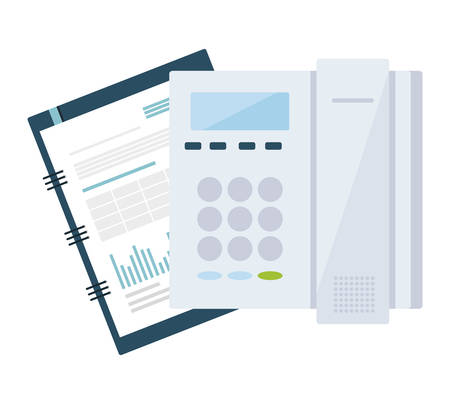1. Introduction: Rethinking Retirement in America
For generations, the American dream of retirement meant working hard at a steady job until your mid-60s, collecting Social Security, and finally relaxing after decades of work. But today, that traditional view is being challenged by a new wave of people who are reimagining what retirement can look like. Across the United States, more and more individuals are breaking away from the standard “9-to-5” grind, using side hustles and innovative money strategies to reach financial independence much earlier than their parents or grandparents ever thought possible.
This shift is happening for a few key reasons. For some, it’s about wanting more freedom and flexibility to travel, pursue passions, or spend time with family. Others are motivated by uncertainty about the future of Social Security or frustration with workplace burnout. Whatever the reason, Americans are increasingly taking control of their financial destinies—often with creative side gigs that bring in extra income outside their main job.
The Changing Face of Retirement
| Traditional Retirement | Modern Early Retirement Movement |
|---|---|
| Work until 65+ | Pursue financial independence as early as 30s or 40s |
| Rely on Social Security & pensions | Build diverse income streams (side hustles, investments) |
| Retirement means “stopping work” | Retirement often means pursuing meaningful projects or part-time work |
Why Side Hustles Are Gaining Popularity
The rise of the gig economy and digital platforms has made it easier than ever for Americans to launch side hustles. Whether it’s driving for ride-share services, selling crafts online, freelancing, or even renting out spare rooms, these opportunities can add up over time and provide an alternative path to reaching financial goals faster.
The Growing Community Around Financial Independence
Online forums, podcasts, and social media groups have created supportive spaces where people share tips and real-life stories about breaking free from the typical work-retire cycle. This growing movement proves that there’s no one-size-fits-all path to retirement anymore—instead, it’s all about finding what works for you and building a lifestyle that supports your unique dreams.
2. The Rise of the Side Hustle Culture
In today’s America, the concept of working just one job is quickly becoming a thing of the past. More and more people are jumping into side hustles—flexible gigs and freelance opportunities that go beyond the traditional 9-to-5 workday. But what’s behind this shift, and why are so many Americans embracing this new way to earn money?
How Common Are Side Hustles?
The numbers tell an interesting story. Recent surveys show that nearly 40% of American adults have at least one side hustle. For younger generations like Millennials and Gen Z, that number is even higher. These extra income streams aren’t just a trend—they’re a growing part of how people support themselves and plan for their futures.
Popular Side Hustles in America
| Type of Side Hustle | Description | Why Its Popular |
|---|---|---|
| Rideshare & Delivery (Uber, DoorDash) | Driving passengers or delivering food and groceries | Flexible hours, quick payouts |
| Online Freelancing (Upwork, Fiverr) | Writing, graphic design, programming, and more | Work from anywhere, use your skills |
| E-commerce (Etsy, eBay) | Selling handmade goods or reselling items online | Low startup cost, scalable income potential |
| Tutoring & Teaching (VIPKid, local tutoring) | Helping students learn subjects or languages online or in-person | Use expertise, flexible schedule |
| Pet Sitting & House Sitting (Rover) | Caring for pets or homes while owners are away | Easy entry, enjoyable for animal lovers |
Why Are Side Hustles So Appealing?
The reasons are as varied as the people doing them. Some want to pay off debt or save for a house. Others dream of financial independence or retiring early—something many Americans now call “FIRE” (Financial Independence, Retire Early). For some, it’s about turning a hobby into cash; for others, it’s simply about making ends meet as living costs rise.
The ‘Hustle’ Mindset in Today’s Economy
A big part of side hustle culture is the mindset: being proactive, creative, and always looking for new ways to earn. It’s about taking control over your financial future instead of waiting for a yearly raise. In today’s gig economy, hustling means being adaptable—whether that’s picking up extra shifts during the holidays or starting a small business on weekends.
Main Reasons Americans Start Side Hustles:
- Supplementing Income: Covering bills or adding to savings.
- Pursuing Passions: Turning hobbies into profitable ventures.
- Building Skills: Gaining experience outside their main job.
- Flexibility: Choosing when and how much to work.
- Aiming for Early Retirement: Investing side earnings to speed up financial goals.
This shift toward multiple income streams is reshaping how Americans think about work—and opening new doors for those dreaming of life beyond the daily grind.

3. Profiles in Perseverance: Real Stories from the Hustle Frontlines
Across the United States, countless people are rewriting their financial futures by embracing side hustles. These real stories show how Americans from all walks of life have tapped into gigs like rideshare driving, freelancing, and e-commerce to boost their savings and fast-track their journey to early retirement. Here’s a look at some inspiring journeys from the hustle frontlines.
Amanda: Turning Weekend Rides into Retirement Wins
Amanda, a school teacher from Dallas, started driving for a rideshare company on weekends to pay off student loans. What began as a way to cover bills soon became a key part of her wealth-building strategy. By consistently setting aside her rideshare earnings in a high-yield savings account, Amanda managed to double her annual savings rate in just three years.
How Amanda Did It
| Side Hustle | Weekly Hours | Monthly Extra Income | Savings Strategy |
|---|---|---|---|
| Rideshare Driving | 15 | $1,000 | Direct deposit to IRA & savings account |
Carlos: Freelance Skills That Fueled Early Freedom
Carlos, an IT professional in Chicago, leveraged his tech skills by offering freelance web design services on platforms like Upwork. In less than two years, Carlos built a steady stream of clients that brought in more than $2,500 each month—money he invested in index funds. His freelance work shaved nearly a decade off his projected retirement age.
Carlos’s Freelance Breakdown
| Freelance Gig | Clients per Month | Average Earnings/Project | Main Investment Focus |
|---|---|---|---|
| Web Design & IT Support | 5-8 | $400-$600 | Index Funds & Roth IRA |
Mia: E-Commerce Entrepreneurial Spirit Pays Off
Mia from Atlanta started selling handmade jewelry on Etsy during the pandemic. With dedication and smart marketing on social media, her side business grew quickly. Within 18 months, Mia was generating enough extra income to max out her 401(k) contributions while building an emergency fund for peace of mind.
Etsy Side Hustle Snapshot
| E-Commerce Platform | Products Sold/Month | Extra Monthly Income | Savings Goal Achieved |
|---|---|---|---|
| Etsy (Handmade Jewelry) | 100-150 pieces | $1,200-$1,800 | Maxed 401(k), Emergency Fund Built Up |
The Power of Persistence Across America’s Hustlers
No matter the background or starting point, these stories show that with determination and creative use of side gigs, everyday Americans can supercharge their savings and bring early retirement dreams within reach. The path isn’t always easy—but the rewards can be life-changing.
4. Crunching the Numbers: How Side Hustles Fuel Financial Freedom
Making Every Dollar Count: Budgeting Your Side Hustle Income
Once you start bringing in money from your side hustle, it’s important to have a plan for every dollar. Many Americans use simple budgeting techniques to make sure their extra income goes where it matters most. The 50/30/20 rule is popular: 50% for needs, 30% for wants, and 20% for savings or debt payoff. When you add a side hustle, you can boost your savings and investments even faster.
| Category | Main Job Income | Side Hustle Income | Total Allocated |
|---|---|---|---|
| Needs (Rent, Groceries) | $2,500 | $0 | $2,500 |
| Wants (Dining Out, Travel) | $800 | $200 | $1,000 |
| Savings & Investments | $700 | $600 | $1,300 |
| Total Monthly Budget | $4,000 | $800 | $4,800 |
Savvy Saving Strategies: Building Your Nest Egg Faster
Americans aiming for early retirement often funnel their side hustle income straight into savings and investment accounts. Here are some common ways to maximize those extra dollars:
- Emergency Fund: Use your side gig cash to quickly build up 3-6 months of living expenses.
- High-Yield Savings Accounts: Park extra money in accounts with better interest rates to grow your cash safely.
- No-penalty CDs: Consider Certificates of Deposit that let you withdraw funds without fees if you need quick access.
Investing Smart: Leveraging Retirement Accounts (IRAs & 401(k)s)
If you want to retire early, investing your side hustle income is key. Many Americans open Roth IRAs or Traditional IRAs, which offer tax advantages for retirement savings. If your main job offers a 401(k), maxing out contributions with your side hustle earnings can also make a big difference. And if youre self-employed from your side gig, a Solo 401(k) or SEP IRA could be great options.
| Account Type | 2024 Contribution Limit* | Main Benefit |
|---|---|---|
| 401(k) | $23,000 (+$7,500 catch-up if over 50) | Pre-tax contributions from employer jobs; many offer matching funds. |
| Solo 401(k) | $69,000 (combined employee + employer), higher for self-employed with side hustles. | Great for freelancers and business owners; high contribution limits. |
| Traditional IRA / Roth IRA | $7,000 (+$1,000 catch-up if over 50) | Tax-deferred or tax-free growth; flexible investment options. |
| SEP IRA | Lesser of $69,000 or 25% of net self-employment income. | Simpler option for side business owners; easy to set up. |
*Limits are subject to annual IRS updates.
Navigating U.S. Taxes on Side Hustles: What You Need to Know
- Track Your Earnings: Use apps or spreadsheets to keep tabs on all side gig income—this will save time at tax season.
- Set Aside Money for Taxes: Side hustle pay isn’t usually taxed upfront. Experts suggest setting aside about 25-30% of your profits for federal and state taxes.
- Deductions Matter: Expenses like mileage, supplies, home office space, and even part of your cell phone bill may be deductible. Save receipts!
Your Game Plan: Turning Extra Income Into Early Retirement Fuel
- Create a separate bank account just for side hustle earnings so you don’t accidentally spend it.
- Aim to invest or save at least half of what you make on the side—watch your wealth snowball!
- If possible, automate transfers to retirement or investment accounts after each payday from your gig work.
- Treat side hustles as real businesses when filing taxes—it can lower your taxable income and increase your savings potential.
- Stay up-to-date on IRS rules regarding self-employment taxes and retirement account contributions—small changes can mean big savings over time!
The right strategy makes every extra dollar from your side hustle work double-time toward achieving financial freedom—and maybe an early retirement dream come true!
5. Lessons Learned: Challenges, Mistakes, and Advice for Aspiring Early Retirees
Building a path to early retirement through side hustles isn’t always smooth sailing. Many Americans who’ve walked this road have encountered their fair share of bumps along the way. Here’s a roundup of the most common hurdles, valuable lessons learned, and actionable tips for anyone looking to start or grow their own side hustle dream.
Common Challenges Side Hustlers Face
| Challenge | Real-World Example |
|---|---|
| Time Management | Juggling a full-time job, family obligations, and a growing side gig left many hustlers feeling stretched thin. For example, Sarah from Ohio found herself working late nights and weekends to keep up. |
| Burnout | Pushing too hard led to exhaustion. Mark in Texas realized he needed scheduled downtime after missing his daughter’s soccer game three weeks in a row. |
| Financial Risks | Investing savings into inventory or tools without guaranteed returns made some side hustlers anxious. Julia in California lost money on her first e-commerce venture before finding her niche. |
| Lack of Expertise | Diving into unfamiliar industries meant a steep learning curve. Tom in Florida took months to master online marketing before seeing any real profits. |
| Staying Motivated | The long journey to early retirement can feel discouraging at times. Lisa in New York kept her motivation up by tracking small wins every month. |
Lessons Learned Along the Way
- Pace Yourself: Slow and steady growth is more sustainable than burning out trying to “make it” overnight.
- Start Small: Test your idea with minimal investment before going all in—many successful hustlers began with weekend gigs or freelance projects.
- Learn as You Go: Every setback is a lesson. Don’t let mistakes discourage you; use them to refine your approach.
- Build a Support Network: Connect with other side hustlers online or locally for advice and encouragement.
- Keep Your Finances Separate: Use different accounts for your main job and side hustle to track profits and avoid confusion during tax season.
- Automate Where Possible: Tools like scheduling apps or bookkeeping software can save hours each week.
- Prioritize Self-Care: Take breaks, get enough sleep, and make time for loved ones—it’s essential for staying motivated long term.
Actionable Advice for Aspiring Early Retirees
Getting Started
- Identify Your Strengths: Choose a side hustle that leverages your skills or interests—it’ll be easier to stick with it when challenges arise.
- Create a Simple Plan: Set clear goals (monthly income targets, time commitment) so you have direction from day one.
- Diversify Income Streams: Don’t rely on one gig—explore multiple small side hustles if possible for added security.
Avoiding Common Pitfalls
- Avoid Debt Traps: Don’t take on unnecessary loans or credit card debt to fund your side hustle; bootstrap where possible.
- Bounce Back from Failure: If something doesn’t work out, pivot quickly—most success stories include at least one failed attempt along the way.
- Track Progress Regularly: Review your numbers monthly so you can see what’s working and what needs tweaking.
Your Next Steps
If you’re ready to join the thousands of Americans using side hustles to carve out an early retirement, remember these lessons and tips from those who’ve gone before you. Start small, stay consistent, learn from every misstep—and soon enough, you could be sharing your own story beyond the 9-to-5!


